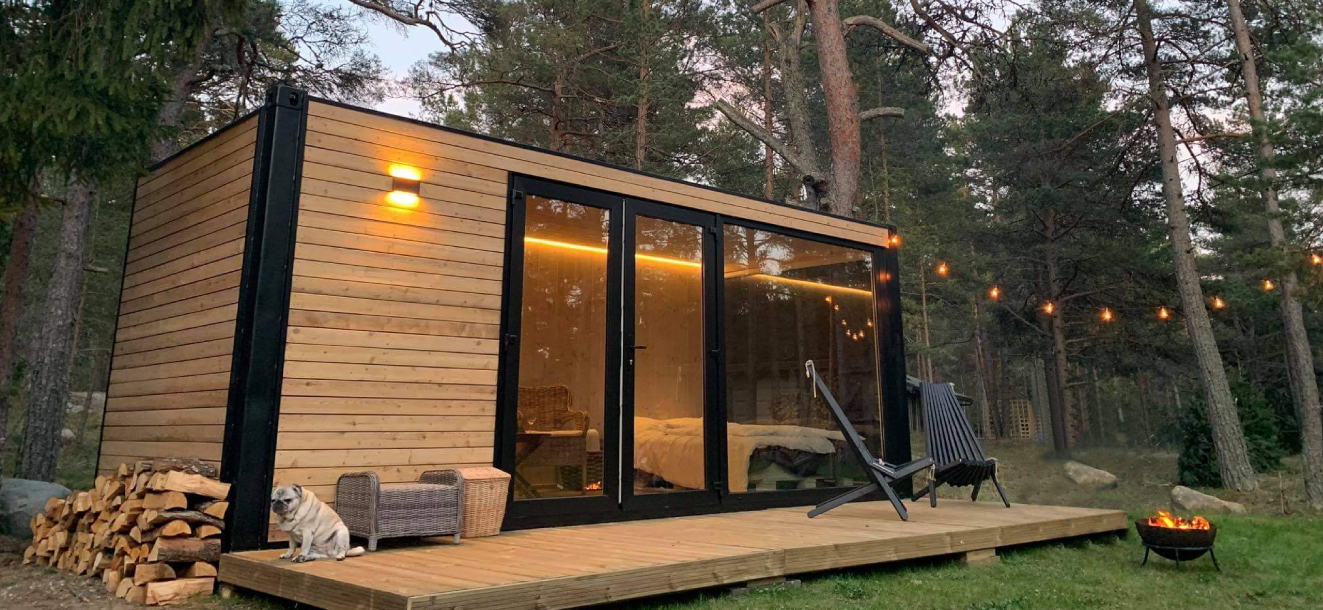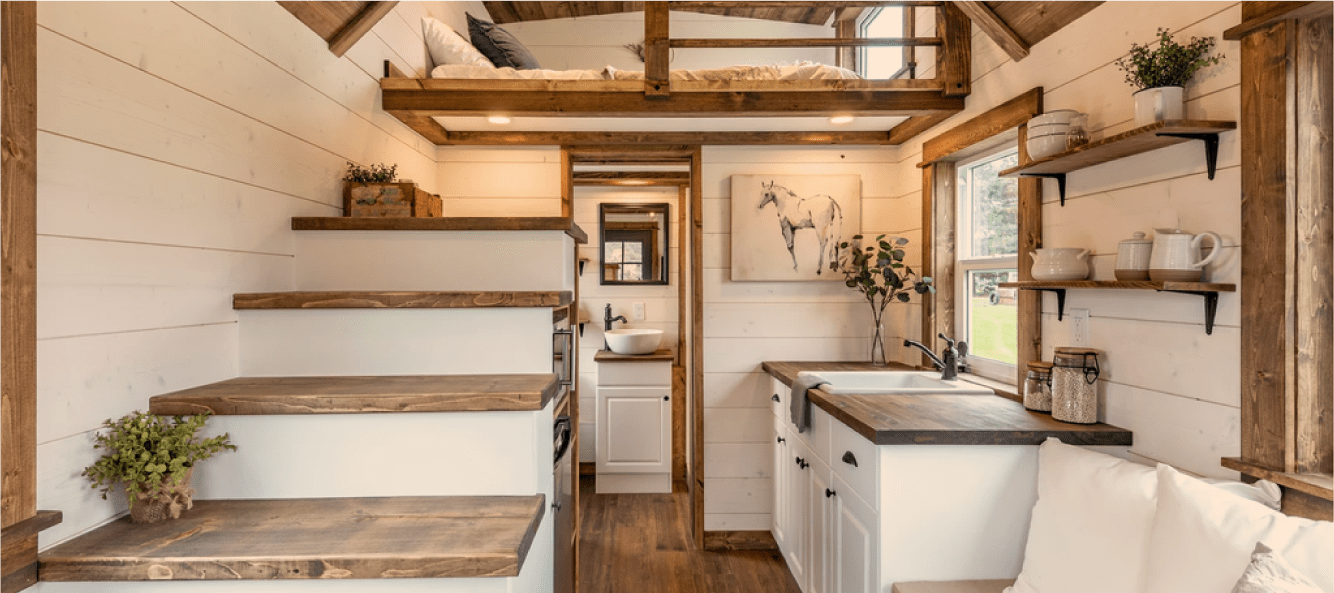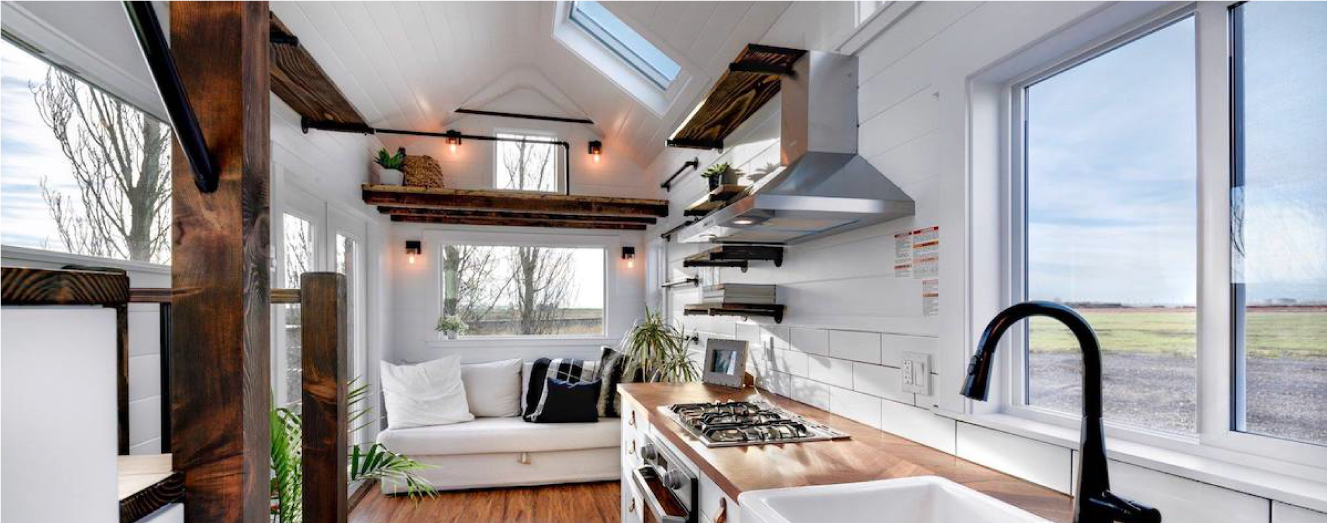The tiny house trend is now a widespread phenomenon in Canada and it is one that is here to stay due to the many advantages they provide. You will soon understand why they gain in popularity, as they say : «in small jars are found the best ointments»!
What is a tiny house?
Like the name claims, a tiny house is smaller in size than the standard house. There are three types of tiny house the first being called the micro-house which is less than 300 square feet in size, the tiny house which averages between 300 and 500 square feet, and finally the little house which has a minimum of 1000 square feet.
There are certain subtle nuances between the many types of houses, for example, a house is only considered permanent when it is built on a sturdy foundation. We consider a house to be mobile strictly when it’s built on wheels. However, these houses are no longer manufactured as they have been gradually replaced by what we commonly refer to as prefab houses, which are trendier and more modern in design. And then, we have transportable houses which are rested on stilts or screw piles.
Helical piles: Your best ally to provide a solid foundation for your tiny house
Considering that the tiny house falls in the category of transportable houses, helical piles constitute the ideal solution for a sturdy foundation. From a logical standpoint alone, one is granted the opportunity of relocating his/her tiny house using the same helical piles.
Making the decision to live in a tiny house offers many financial upsides short, medium and long term however, the tiny house market is considered a new one and therefore they sometimes don’t achieve the real house status. In fact, many municipalities don’t yet recognize them as such so it would be wise to do a bit of investigation and find out what the municipal rules are regarding tiny houses before going forward with your project.
The tiny house advantages!
For some, the decision to settle for a tiny house is also choosing a totally alternate lifestyle, one that is minimalist or based on voluntary simplicity. That lifestyle respects environmental values at a very low cost. Opting for a minimalistic allows for a more symbiotic relation with nature relying uniquely on the earth fundamentals, far from today’s over-consuming society. Living on love and water is an accurate depiction of this type of lifestyle.
Because it is small in size, the tiny house is very low maintenance and cost efficient in terms heating and electricity consumption. Most tiny house owners are generally more inclined to use renewable energy sources, for instance by using solar panels. All these choices are always in a manner that offers a view towards the earth’s preservation and wellbeing.
Choosing the helical pile route will ensure a quick and environmentally friendly alternative that provides uncompromising stability and durability.



